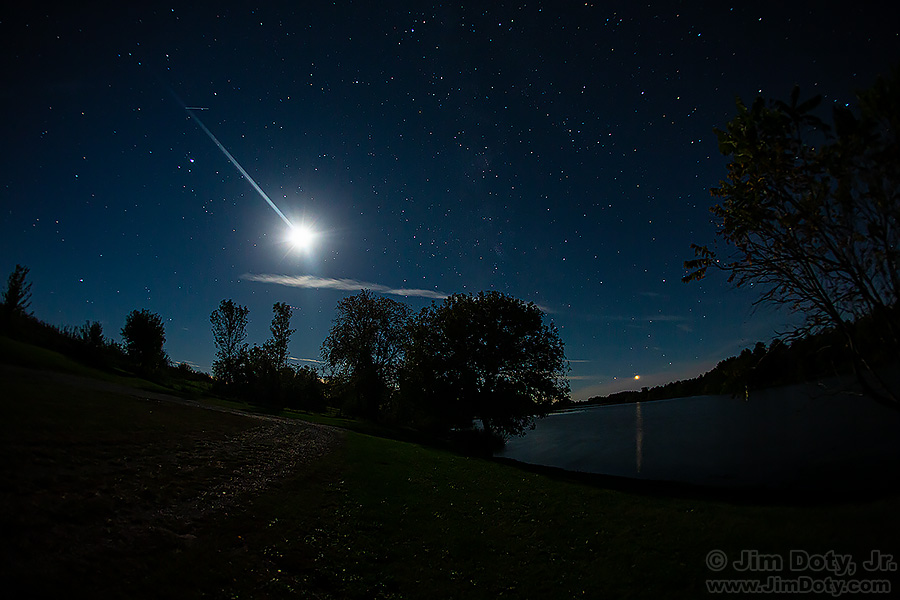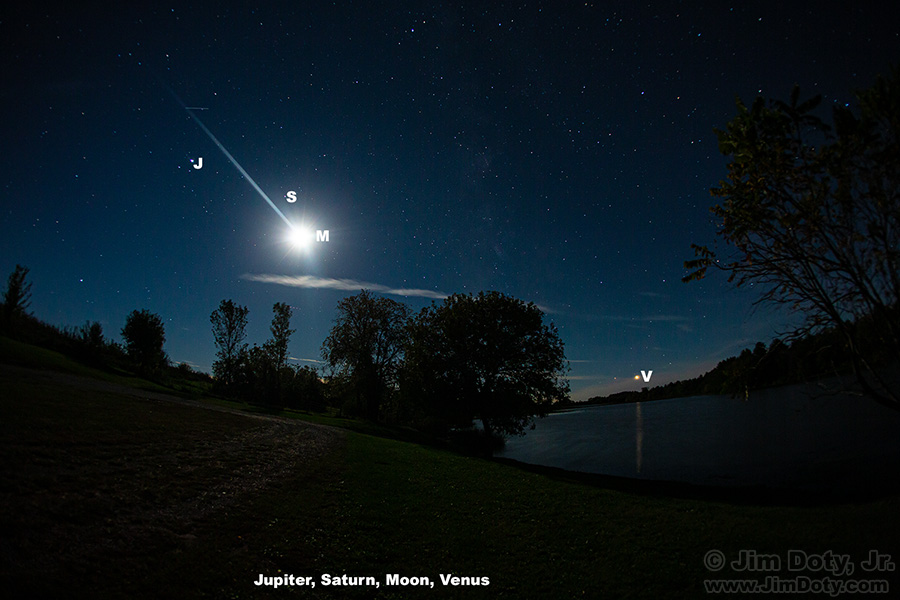
Thursday evening, October 14, 2021, you can photograph Jupiter, Saturn, and the Moon all in one frame, and Venus too provided you have a really wide angle lens. This photo was taken October 13 at 8:11 pm local time and Venus is getting pretty low in the sky. On October 14, the moon will be in between and below Jupiter and Saturn, forming a triangle.
You will need a camera with a lens that you can focus manually, and a tripod or other stable camera support. If you have not photographed the night sky before, learn how to manually focus your lens on infinity.
Go out 45 minutes to an hour after sunset and wait for Jupiter to appear in the southeast and Venus in the southwest. Jupiter will be just above and to the left of the moon. As it get darker Saturn will appear above and to the right of the moon. Stars will appear as it gets darker still.
Put your widest angle lens on your camera and the camera on a tripod. Focus the lens on infinity. Set the the ISO to 800 and the lens aperture to f/4. If your lens aperture isn’t wide enough to have f/4 as an option, set the ISO to 1600 and the lens aperture to f/5.6. Point your camera south and do your best to get both Jupiter (the brightest object other than the moon in the southeastern sky) and Venus (the brightest object other than the moon in the southwestern sky) in the frame at the same time. If you can’t get everything in, you will choose what you most want in the frame.
Take pictures at a variety of shutter speeds from 1 second to 30 seconds. A shutter speed around 8 or 15 seconds should give you planets and stars that look pretty good, but you want other shutter speed options to choose from when you download your photos. The moon will be totally washed out, but that is ok.
If you don’t like the moon washed you will need to combine two images with different exposures. Try a shutter speeds from 1/500 to 1/1000 second to get a better exposure for the moon.
Exposure data: Canon 5D Mark III camera, Canon 15mm lens. f/3.5, ISO 800.
Link

